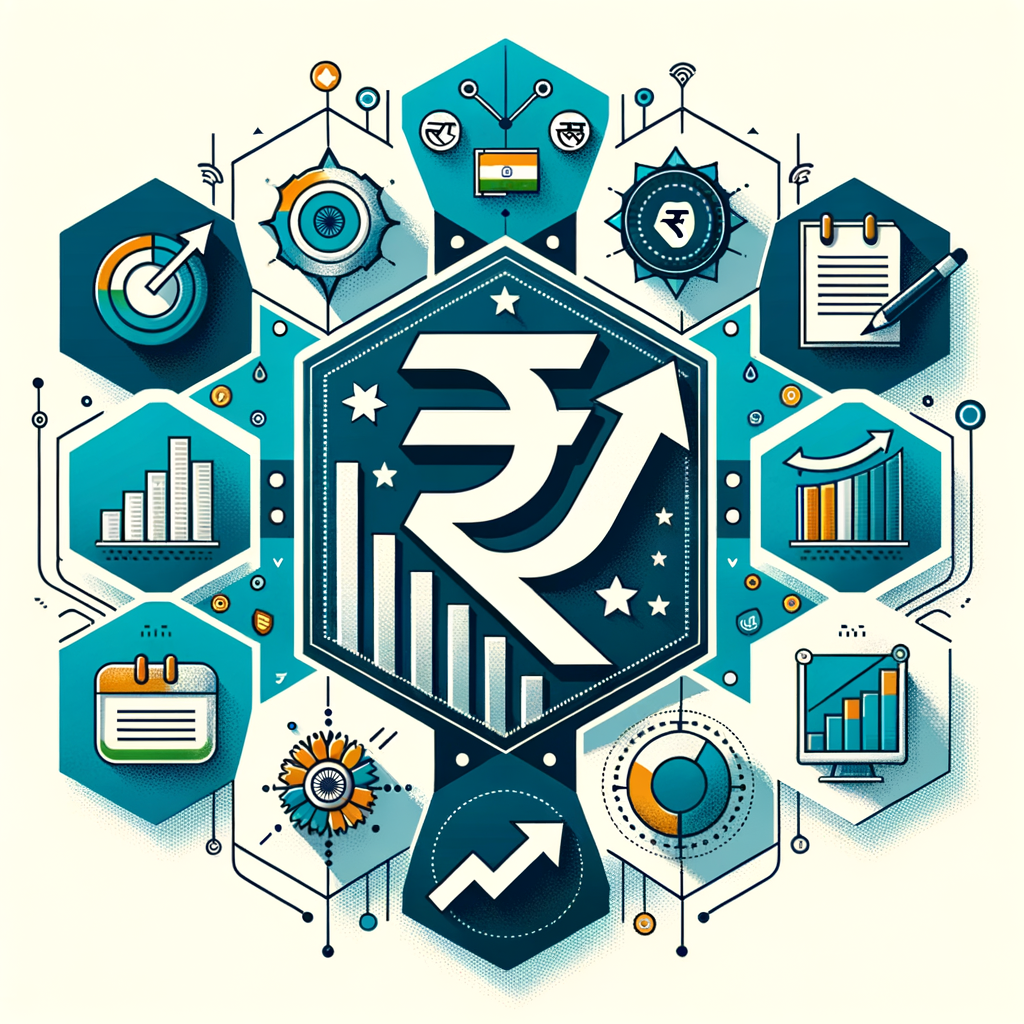Future of GST in India – What to Expect Beyond 2025
Since its landmark implementation in 2017, the Goods and Services Tax (GST) has fundamentally reshaped India’s indirect tax landscape, replacing a complex web of central and state levies with a unified system. This journey has been transformative, marked by both challenges and significant achievements. As we look ahead, understanding the Future of GST India is no longer just for tax professionals; it’s crucial for every business owner and consumer. The government’s focus is now shifting from stabilization to evolution, promising significant GST changes after 2025 that will further simplify compliance, widen the tax base, and leverage technology. This article explores the key expectations for GST in India 2025 and beyond, detailing the anticipated reforms, technological advancements, and the direct impact these changes will have on your business and daily life.
The GST Journey: A Brief Recap
To understand where we are going, it’s important to remember where we started. The initial vision of GST was ‘One Nation, One Tax, One Market’—a powerful idea aimed at eliminating cascading taxes and streamlining commerce across state borders. The road, however, was not without its bumps. The initial rollout saw businesses grappling with technology glitches on the GST Network (GSTN) portal and struggling to adapt to new compliance requirements. Small businesses, in particular, faced a steep learning curve.
Over the years, the GST Council has worked diligently to address these teething issues. We have witnessed several key milestones that have stabilized the system:
- Introduction of E-invoicing: This was a game-changer for B2B transactions, standardizing invoice reporting and enabling real-time tracking by the tax authorities, which significantly curbed tax evasion.
- Simplified Return Forms: The launch of the Quarterly Return Monthly Payment (QRMP) scheme provided much-needed relief to small taxpayers with a turnover of up to ₹5 crores, reducing their compliance burden.
- Stabilization of the GSTN: The technology backbone of GST, the GST Portal, has become significantly more robust and user-friendly over time, handling massive volumes of data with improved stability.
These achievements have laid a strong foundation for the next phase of GST’s evolution in India.
Key Predictions for the Future of GST India
As the GST regime matures, the focus is squarely on making it more efficient, transparent, and user-friendly. The government and the GST Council are actively considering several reforms that could be rolled out in the coming years. These GST reforms predictions India are centered around rate rationalization, expanding the tax base, and deploying advanced technology for better administration and compliance.
Streamlining GST Rate Slabs
One of the most anticipated and widely discussed reforms is the GST Slab Rationalisation 2025 – From Four Slabs to Two. India currently operates a multi-slab structure with four primary rates: 5%, 12%, 18%, and 28%, along with a special 3% rate for gold and 0.25% for rough precious stones. While this structure was a compromise to keep the tax incidence close to pre-GST levels for various goods, it adds complexity.
The most probable prediction is the merger of the 12% and 18% slabs into a single, median rate, likely around 15% or 16%. A group of ministers has already been tasked with exploring this possibility. The potential impact of GST changes India from this move would be profound:
- For Businesses: It would significantly simplify compliance, reducing classification disputes and making inventory management and invoicing easier.
- For Consumers: The prices of goods currently in the 18% slab (like electronics, soaps, and toothpaste) could decrease, while those in the 12% slab (like processed foods and apparel) might see a slight increase.
- For the Economy: A streamlined rate structure could lead to reduced inflation on many common-use items and boost consumption, while also making the overall tax system more efficient.
Bringing New Sectors Under GST
Several crucial sectors of the economy were kept outside the GST ambit during its initial implementation for various revenue and political reasons. Bringing them into the fold is a major item on the long-term reform agenda.
Here are the key sectors under consideration:
| Sector | Current Status | Potential Impact of Inclusion in GST |
|---|---|---|
| Petroleum Products | Taxed separately by Centre (Excise) and States (VAT). Rates are high and vary significantly across states. | Pros: Uniform pricing nationwide, seamless Input Tax Credit (ITC) for the logistics and transportation sectors, leading to lower operational costs. Cons: A major revenue source for states; a revenue-neutral rate would need to be very high. |
| Real Estate | Stamp duty and registration charges (by states) are outside GST. GST is applicable only on under-construction properties. | Pros: Simplifies taxation for developers and buyers, could reduce property prices by allowing developers to claim ITC on raw materials like cement and steel. Cons: Stamp duty is a significant revenue source for states, requiring a constitutional amendment. |
| Alcohol for Human Consumption | States have exclusive power to levy taxes (State Excise). | This is the most contentious issue due to it being a massive revenue generator for states. Inclusion is highly unlikely in the near future without a major political consensus and constitutional changes. |
While the inclusion of alcohol seems distant, bringing petroleum and real estate under GST is a matter of when, not if, and could be a major reform post-2025.
Technology and the Future of GST Compliance
Technology is the backbone of GST, and its role is set to expand dramatically. The The Future of Tax Filing: Trends to Watch in 2025 will be driven by data analytics, artificial intelligence (AI), and automation, making tax evasion increasingly difficult and compliance easier for honest taxpayers.
Here are some key technological trends to watch for:
- AI and Machine Learning: The GST Network (GSTN) is already using advanced analytics to detect fraudulent activities. In the future, AI will be deployed more aggressively for risk-based audits, identifying fake invoicing networks, and flagging mismatches between a taxpayer’s various returns (GSTR-1, GSTR-3B, E-Way Bills) in real-time.
- Enhanced E-invoicing: The e-invoicing mandate, currently applicable to businesses with a turnover above ₹5 crores, will likely be extended to all B2B transactions. The next logical step is its voluntary, and eventually mandatory, expansion to B2C transactions. This would create a complete digital trail of all transactions in the economy.
- Pre-filled Returns: The ultimate goal is to make compliance a “click of a button” affair. Using data from e-invoices, e-way bills, and supplier returns, the GSTN will provide fully pre-filled returns (like GSTR-3B). Taxpayers would only need to verify the auto-populated data and pay the tax, drastically reducing time, effort, and errors.
How Will the Evolving GST Landscape Impact You?
Understanding these potential changes is one thing, but knowing how they will affect you directly is what matters most. The Future of GST India will have distinct implications for different groups, and the GST implementation outlook India suggests a proactive approach is best.
For Small Business Owners
For entrepreneurs and small business owners, the evolving GST landscape presents both opportunities and challenges.
- Simplified Compliance: The best news is the move towards greater simplification. Pre-filled returns, a stable portal, and rationalized tax slabs will mean less time spent on paperwork and more time focused on growing your business.
- Input Tax Credit (ITC) Scrutiny: The flip side of technology-driven compliance is enhanced scrutiny. With AI-powered tools, the tax department will have an unprecedented ability to detect fraudulent or Input Tax Credit (ITC) Under GST 2025 – New Claim Rules. Mismatches between your purchase records (GSTR-2B) and your claimed ITC (GSTR-3B) will be flagged instantly.
Actionable Advice for Businesses:
- Embrace Digital Record-Keeping: Ditch the paper ledgers. Use reliable accounting software to maintain meticulous digital records of every sale and purchase. This is the foundation for seamless compliance.
- Stay Updated: Keep a close eye on the outcomes of GST Council meetings and official notifications. The rules are constantly evolving.
- Partner with an Expert: The changing GST implementation outlook India can be complex. Partnering with a reliable tax consultant like TaxRobo ensures you are always compliant, can claim all eligible ITC, and are prepared for any future changes.
For Salaried Individuals
Even if you are not a business owner, GST reforms will have a direct bearing on your financial life.
- Impact on Household Budgets: The rationalization of GST rates will be the most direct impact. If the 12% and 18% slabs are merged into a 15% rate, your monthly budget could change. The cost of services and goods currently taxed at 18% (e.g., TVs, mobile phones, restaurant bills) may decrease, while goods at 12% (e.g., ghee, butter, certain packaged foods) could become slightly more expensive.
- Transparency in Billing: The potential inclusion of sectors like real estate under GST could bring much-needed transparency. It could simplify the cost structure of buying a home and potentially make it more affordable by allowing builders to pass on ITC benefits.
- Why It Matters: A stable, efficient, and broad-based GST system boosts government revenue, reduces the fiscal deficit, and contributes to overall economic health. A stronger economy translates to better infrastructure, more job opportunities, and stable inflation—all of which benefit every citizen in the long run.
Conclusion
The road ahead for GST in India is one of continuous evolution and refinement. The Future of GST India is clearly pointed towards a system that is simpler, more technologically advanced, and has a broader base. The key takeaways for what to expect beyond 2025 are rate rationalization to reduce complexity, the gradual inclusion of excluded sectors like petroleum and real estate, and a massive leap in technology-driven compliance powered by AI. While these changes will require adaptation from everyone, the overarching goal is to create a more efficient and transparent tax regime that fuels India’s economic growth.
Navigating GST changes can be complex. Stay ahead of the curve and ensure your business is fully compliant. Contact TaxRobo’s GST experts today for a personalized consultation on preparing for the future of GST.
Frequently Asked Questions (FAQs)
1. Will petrol prices decrease if brought under GST?
It’s not a simple yes or no. The final price depends entirely on the GST rate applied. If petroleum is placed in the highest 28% slab, and a cess is also levied, the final price might not change much. However, bringing it under GST would create price uniformity across the country and allow businesses in the logistics sector to claim ITC, which could reduce transportation costs. A significant price drop for consumers is not guaranteed and depends on political consensus on a revenue-neutral rate.
2. What is the single biggest step a small business can take to prepare for future GST trends in India?
The most crucial step is to maintain immaculate digital records of all sales, purchases, and expenses. This forms the bedrock of modern tax compliance. Accurate digital records will enable you to claim every rupee of eligible Input Tax Credit, seamlessly adapt to e-invoicing requirements, and easily verify the data in future pre-filled GST returns.
3. How will the future of GST compliance affect GST audits?
The GST compliance future India will transform audits completely. We will see a shift from physical, discretionary audits to data-driven, remote assessments. The tax authorities will use AI and advanced analytics to flag high-risk taxpayers and discrepancies between GSTR-1, GSTR-3B, e-way bills, and e-invoices. This means audits will become more targeted, objective, and efficient, focusing on specific data mismatches rather than broad-based scrutiny.
4. As a salaried person, why should I care about GST changes after 2025?
You should care about GST changes after 2025 because GST is an indirect tax baked into the price of nearly every product and service you consume. Any change in GST rates directly impacts your cost of living. A reduction in the tax rate for electronics makes your next phone cheaper, while an increase in the rate for processed foods affects your grocery bill. Staying informed about these changes helps you understand shifts in your household budget. For official announcements, you can always refer to the CBIC website.



